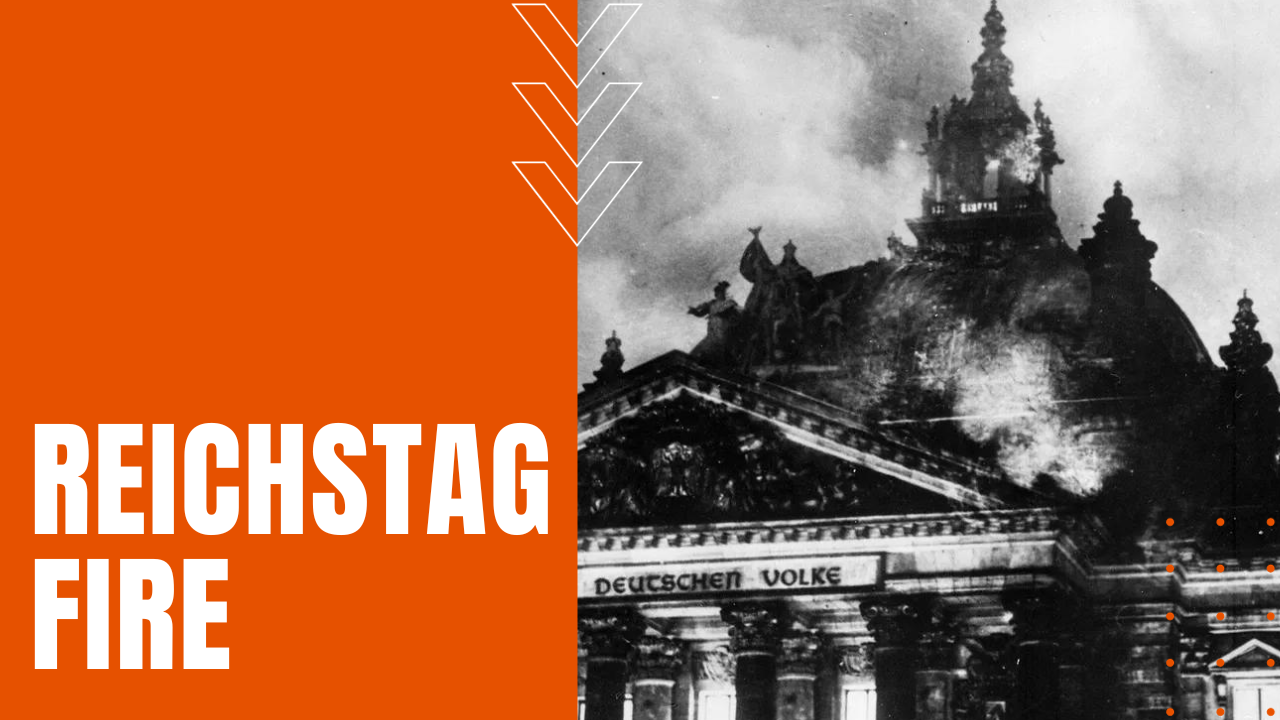The Reichstag Fire

As Adolf Hitler and his Nazi Party gained strength in the late 1920s, the Nazis played on widespread discontent with the ruling Weimar Republic, not to mention Germany’s pressing economic woes caused by their defeat and reparation payments following the First World War. In response to his dwindling support, in 1933, war hero and now Weimar President Paul von Hindenburg reluctantly appointed Hitler chancellor of Germany, in an effort to build a right wing coalition against his far left opponents.
Rapid Political Suppression
In response, the Nazis quickly suppressed their political opponents, issuing a February 4th Decree for the Protection of the German People, which effectively muzzled the German press and banned political marches and assemblies, at the same time raiding Communist party headquarters in Berlin, before falsely claiming they had found seditious pamphlets encouraging an armed Communist revolt. In retaliation, on the night of February 27th, the Reichstag or German parliament was set ablaze, destroying its gilded cupola and main chamber, causing $1 million in damage—or some $24 million in today’s currency—before firefighters could extinguish the flames.
A Communist Sympathizer to Blame
Police arrested Marinus van der Lubbe at the scene, an unemployed Dutch laborer with known Communist sympathies, who in turn confessed to setting the fire as an encouragement for a worker’s uprising against the Weimar Republic. Tried in January of 1934, alongside four other Communist members, Van der Lubbe was convicted and beheaded before the close of the month. In its wake, the Reichstag Fire ignited national fears of a Communist takeover, obliging Hitler to convince Hindenburg to invoke Article 48 of the Weimar Constitution, effectively handing the Fuhrer dictatorial power over Germany.
Tightening the Reigns
Hitler and his cabinet wasted no time drawing up a more permanent and expansive doctrine known as the Reichstag Fire Decree, which outlawed the right of assembly, freedom of the press and freedom of speech, at the same time removing restraints on police investigations, which led to the arrest, torture and imprisonment of some 4,000 people. Hitler’s brutal response to the Reichstag Fire—some historians have fingered the Nazis themselves as the cause of the blaze—elevated Hitler’s image as a resolute savior from the dreaded Bolsheviks, leading to a Reichstag assembly on the night of March 23rd, hastily passing the Enabling Act, which gave Hitler full dictatorial power over Germany, and when the ailing Hindenburg died later that year, the German Army sanctioned Hitler as both president and chancellor, setting the stage for the horrors to come during the Second World War.
